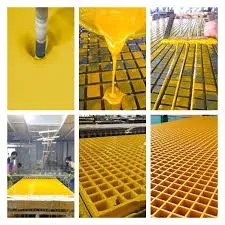
-
 Afrikaans
Afrikaans -
 Albanian
Albanian -
 Amharic
Amharic -
 Arabic
Arabic -
 Armenian
Armenian -
 Azerbaijani
Azerbaijani -
 Basque
Basque -
 Belarusian
Belarusian -
 Bengali
Bengali -
 Bosnian
Bosnian -
 Bulgarian
Bulgarian -
 Catalan
Catalan -
 Cebuano
Cebuano -
 China
China -
 China (Taiwan)
China (Taiwan) -
 Corsican
Corsican -
 Croatian
Croatian -
 Czech
Czech -
 Danish
Danish -
 Dutch
Dutch -
 English
English -
 Esperanto
Esperanto -
 Estonian
Estonian -
 Finnish
Finnish -
 French
French -
 Frisian
Frisian -
 Galician
Galician -
 Georgian
Georgian -
 German
German -
 Greek
Greek -
 Gujarati
Gujarati -
 Haitian Creole
Haitian Creole -
 hausa
hausa -
 hawaiian
hawaiian -
 Hebrew
Hebrew -
 Hindi
Hindi -
 Miao
Miao -
 Hungarian
Hungarian -
 Icelandic
Icelandic -
 igbo
igbo -
 Indonesian
Indonesian -
 irish
irish -
 Italian
Italian -
 Japanese
Japanese -
 Javanese
Javanese -
 Kannada
Kannada -
 kazakh
kazakh -
 Khmer
Khmer -
 Rwandese
Rwandese -
 Korean
Korean -
 Kurdish
Kurdish -
 Kyrgyz
Kyrgyz -
 Lao
Lao -
 Latin
Latin -
 Latvian
Latvian -
 Lithuanian
Lithuanian -
 Luxembourgish
Luxembourgish -
 Macedonian
Macedonian -
 Malgashi
Malgashi -
 Malay
Malay -
 Malayalam
Malayalam -
 Maltese
Maltese -
 Maori
Maori -
 Marathi
Marathi -
 Mongolian
Mongolian -
 Myanmar
Myanmar -
 Nepali
Nepali -
 Norwegian
Norwegian -
 Norwegian
Norwegian -
 Occitan
Occitan -
 Pashto
Pashto -
 Persian
Persian -
 Polish
Polish -
 Portuguese
Portuguese -
 Punjabi
Punjabi -
 Romanian
Romanian -
 Russian
Russian -
 Samoan
Samoan -
 Scottish Gaelic
Scottish Gaelic -
 Serbian
Serbian -
 Sesotho
Sesotho -
 Shona
Shona -
 Sindhi
Sindhi -
 Sinhala
Sinhala -
 Slovak
Slovak -
 Slovenian
Slovenian -
 Somali
Somali -
 Spanish
Spanish -
 Sundanese
Sundanese -
 Swahili
Swahili -
 Swedish
Swedish -
 Tagalog
Tagalog -
 Tajik
Tajik -
 Tamil
Tamil -
 Tatar
Tatar -
 Telugu
Telugu -
 Thai
Thai -
 Turkish
Turkish -
 Turkmen
Turkmen -
 Ukrainian
Ukrainian -
 Urdu
Urdu -
 Uighur
Uighur -
 Uzbek
Uzbek -
 Vietnamese
Vietnamese -
 Welsh
Welsh -
 Bantu
Bantu -
 Yiddish
Yiddish -
 Yoruba
Yoruba -
 Zulu
Zulu
Innovative Designs and Applications of FRP TEE in Modern Engineering Solutions
Understanding FRP Tee A Comprehensive Overview
Fiber Reinforced Polymer (FRP) has gained significant traction in various industries due to its unique properties, including high strength-to-weight ratio, corrosion resistance, and ease of installation. Among the diverse types of FRP components, the FRP Tee stands out as an essential element, providing structural support and enhancing the overall performance of numerous applications.
What is FRP?
FRP is a composite material made from a polymer matrix reinforced with fibers, typically glass, carbon, or aramid. These fibers contribute to the material's mechanical strength and durability, while the polymer matrix offers protection and bonding. The combination results in a material that is lightweight, resistant to chemical attack, and capable of sustaining significant load.
The FRP Tee
An FRP Tee is a type of structural component shaped like the letter T. It is created by combining two perpendicular sections a vertical stem and a horizontal flange. This design allows FRP Tees to efficiently bear loads and distribute stress in structural applications. They are commonly used in construction, electrical applications, and chemical processing industries.
Applications of FRP Tees
1. Construction In the construction sector, FRP Tees are used for beams and columns, providing support in environments where traditional materials may not withstand harsh conditions. Their corrosion resistance makes them ideal for use in bridges, waterfront structures, and roofs exposed to the elements.
2. Electrical Industry FRP Tees are also prevalent in the electrical industry. They serve as supports for electrical cables, conduits, and other components requiring a lightweight yet sturdy framework. FRP’s non-conductive properties enhance safety in electrical applications.
3. Chemical Processing The chemical industry often utilizes FRP Tees due to their ability to resist corrosion from various chemicals. They are used in storage tanks, pipe supports, and as part of the infrastructure in facilities handling aggressive substances.
Advantages of FRP Tees
The use of FRP Tees brings several advantages
frp tee

- Lightweight Compared to traditional materials like steel or concrete, FRP Tees are significantly lighter. This characteristic translates to reduced transportation costs and easier handling during installation.
- Corrosion Resistance One of the most notable advantages is their resistance to corrosion, making them suitable for challenging environments where traditional materials would degrade rapidly.
- Longevity FRP Tees exhibit excellent durability, which translates to longer service life and lower maintenance costs over time.
- Versatility The manufacturing process of FRP allows for various shapes, sizes, and performance characteristics, accommodating diverse requirements across different industries.
Considerations for Use
While FRP Tees offer numerous benefits, certain considerations should be taken into account when selecting them for a project
- Cost The initial cost of FRP materials can be higher than traditional materials. However, reduced maintenance and replacement costs can offset the initial investment.
- Temperature Limitations FRP materials generally have thermal limitations, and their performance can be affected by extreme temperatures. Understanding the operational environment is crucial.
- Design Knowledge Proper knowledge and expertise in designing with FRP are essential to ensure that the structural components are appropriately sized and positioned for the intended loads and conditions.
Conclusion
FRP Tees represent a significant advancement in material technology, offering a combination of strength, durability, and lightweight properties that traditional materials cannot match. As industries continue to face challenges related to corrosion, environmental factors, and material weight, the adoption of FRP Tees is increasingly becoming a preferred solution. By understanding the benefits and applications of FRP Tees, engineers and decision-makers can make informed choices that enhance project outcomes and operational efficiencies.









